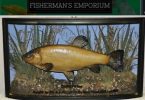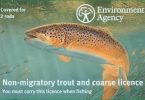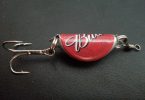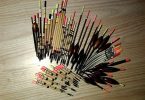The drive to provide renewable energy has resulted in a proliferation of schemes (potentially tens of thousands) to develop small hydropower projects, especially run-of-river, which are those which have no capacity to store large quantities of water. The majority rely on an impoundment to create a head of water or to facilitate the abstracting structure. Others rely on the natural gradient of the river to create a head by diverting water into a separate channel.
The forms of turbines, fish passage arrangements and effects on water flows in the associated environments are among the major factors affecting the ecological impacts of run-of-river hydropower schemes.
POSITION
- The Institute of Fisheries Management understands the desire to develop renewable energy in the form of hydropower, but believes that this should form part of a strategic assessment of sources of power and environmental risks. The IFM will support appropriate hydropower developments where it can be clearly demonstrated that they will not cause damage to fish populations or prevent a river reach from achieving Good Ecological Status or Potential as required by the Water Framework Directive.
- The Institute proposes that prior to any more hydro schemes being approved a strategic review of river catchments is undertaken. This would identify priority catchments where hydropower should be prohibited. Furthermore any impoundments which are blocking migration (for diadromous as well as potamodromous fish such as salmon, trout or eels) should firstly be assessed for removal or lowering. Hydropower should only be permitted on obstructions that cannot be removed and where suitable fish passage facilities (upstream and down) are included (on all channels).
- The Institute will work with environmental regulators, the hydropower industry and other interested parties to promote and support science to further our understanding of the relationship between fish ecology and hydropower schemes and the development of measures to minimise impacts of schemes on the environment and fisheries.
- The Institute does not support the building of new dams or weirs or retention of existing dams or weirs solely for hydropower purposes unless accompanied by mitigation measures that will maintain or improve the river reach to good ecological status or favourable conservation status for fish species that are features of interest of an associated Special Area for Conservation or otherwise protected.
- The Institute supports the development and use of turbine types that present low risks of damage and mortality of fish, either direct or indirect, and thereby obviate the need to install screens or other measures to protect fish from damage.
- The Institute supports such regulatory or mitigation measures in relation to run-of-river hydropower developments as are necessary to maintain or encourage natural population movements and abundance of fish both up and downstream.
- The Institute does not support run-of-river hydropower developments that may involve fish entering reaches from which their exit is unnaturally constrained or where they may be put at risk from adverse environmental conditions associated with flow diversion.
- The Institute calls upon regulators to adopt the precautionary principle and require a form of environmental risk assessment relating to all fish stocks present and the fisheries affected by each hydropower development proposal. Monitoring should be required of any scheme where doubts remain as to the effectiveness of the regulatory measures adopted in relation to the risks identified.
- The Institute recognises the likelihood of cumulative effects from series of hydropower developments within a catchment and calls upon regulators to develop overall catchment strategies for hydropower development.
- The Institute encourages the development of run-of-river hydropower schemes that include mitigation measures, such as fish passes, where the overall benefits to fisheries and the local economy far outweigh any damage caused by the hydropower elements.
Issues
Turbines may be situated on or adjacent to a weir or on separate channels ranging from a few metres to several kilometres. Diversions of flow to or away from turbines may similarly leave depleted reaches of such lengths.
- When water is diverted from the natural river channel this may impact on the morphology and ecology of the depleted reach.
- Current environmental approach to depleted flows is that all elements of a flow regime are important, including floods, medium and low flows (see IFM Position Statement on Flows).
- A typical flow regime for hydropower is to leave a “hands-off” amount of between Q95 and Q100 and then take any additional flow up to the mean or greater.
- Installing the turbine on, or immediately adjacent to, an impounding structure avoids a long depleted reach. However, on many heavily impounded low gradient rivers the weirpools provide important habitats for rheophilic species. The loss of energy into this system may have a severe impact.
- Impoundments fragment habitats and impede migration of diadromous and potamodromous fish such as salmon, trout or eels.
- Some impounding structures and natural obstructions may be passable to fish at certain flows. Diversion of water may eliminate or decrease the window of migration opportunity.
- Where there are multiple channels, upstream migrating fish are usually attracted to the greater flow. If this has no fish passage facility, migration will be delayed or prevented. Even if fish find the correct channel, depleted flows may impede passage.
- Where there is a fish passage facility on an obstruction, the greater flow from a turbine may prevent fish from finding it.
- Constrained flow turbines are inherently impassable to upstream migrating fish and may require screens to divert them from attempting to ascend by this route.
- Downstream migrating fish such as young salmon or trout, or adult eels, may be impeded by being unable to find a passage route, or damaged or killed by contact with structures associated with a hydropower scheme.
- Fish entrained into a turbine may be killed or injured, the severity depending on the type of turbine, its size, operation in relation to design flows and the length, body form and behaviour of the fish.
- Some turbine designs are inherently more fish-friendly than others. For downstream migrant fish, guide vane and turbine blade impacts are often a major source of mortality, but shear forces and pressure changes may also cause mortalities. Disoriented fish may also be subject to increased indirect mortality from predators.
- Vulnerable sizes and species of fish should, where necessary, be prevented from entering the turbine by appropriate screening and by-wash channel. However, screen impingement may also be a source of mortality.
- When considering the impact of a scheme, the cumulative effects of existing, or potential, schemes on the river catchment must be taken into account.







